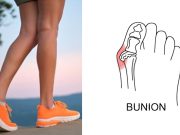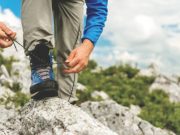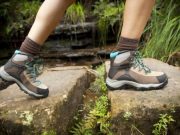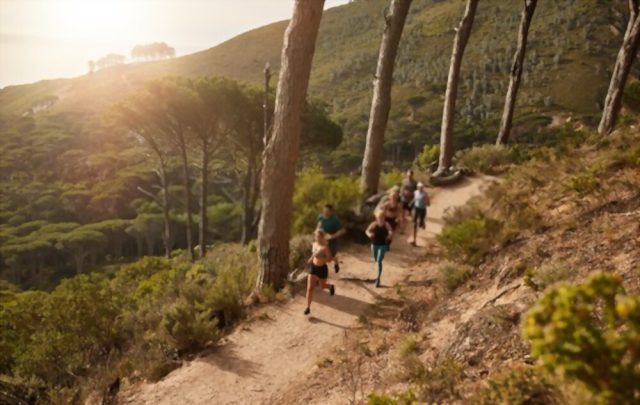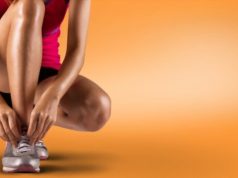To find the perfect trail running shoe, it’s essential to start with an honest self-assessment. You will need to consider the terrain you’ll be running on and understand the different types of trail running shoes available. You’ll also want to look at your shoes’ sole, upper, and heel counter to ensure they provide optimal support and grip. Finally, try before you buy and get help from a gait analysis if needed. With this guide, you’ll be well on your way to finding the perfect pair of trail running shoes.
Table of Contents
How to Buy Trail Running Shoes:
01: Get a Fit Assessment:
Getting the right fit is essential for a successful trail running experience. Before shopping for shoes, getting a fit assessment from a footwear specialist is important. They can assess the size and shape of your feet and advise you about how different brands fit. Any REI store can do this for you, or you can look into having a gait analysis done.
Once you know your size and shape, you can look at five strategies for finding your perfect pair of running shoes. Consider your terrain, check out the sole, review the heel counter, make sure it has a good fit, and understand the different types of trail running shoes. Lastly, be sure to try on several pairs before you buy and test them out by running around the store.
This will ensure you have at least a thumb’s width of space between the tip of your toes and the front of the trail shoe when running hills and other off-road terrains. Look for a padded collar and tongue to support and avoid rubbing, mainly if you run for long periods; these small details can make all the difference in finding the right pair of shoes.
02: Consider Your Terrain:
Once you’ve had a fit assessment and understand the different types of trail running shoes, it’s time to consider the terrain you will be running on. The type of terrain determines the kind of shoe you need. For example, if you’re running on various terrains, you’ll need a lightweight and versatile shoe with shorter, more closely spaced lugs.
On the other hand, if you mainly run on hard-packed trails or are looking for stability and protection, then look for shoes with deeper lugs and cushioning. No matter what terrain you run on, ensure your shoes are up to the task and provide the necessary traction.
03: Look at the Sole:
Once you’ve assessed your fit, considered the terrain you’ll be running on, and checked out the shoe’s upper, it’s time to look at the sole. The sole of your trail running shoes is the most critical factor in traction. Look for lugs or spikes that give you a good grip on uneven surfaces, and ensure that the material is durable and can withstand rough terrain.
It’s also important to note that the sole should be made from a material that won’t wear down quickly—you don’t want your shoes to start slipping after just a few runs. Finally, if you’re buying minimalist shoes, then look for a lower stack height (a measure of how much cushioning is provided at the heel). This will help you maintain better control over your footing on technical trails.
04: Check Out the Upper:
Once you’ve found a shoe that fits well, it’s time to check out the upper. The upper is the top portion of the shoe that covers your foot. It should be made of lightweight, breathable materials, such as mesh and synthetic leather. Look for an upper that offers enough support to keep your foot secure without feeling too tight.
If you’re a trail runner, look for an upper that will protect you from small rocks and debris. It’s also essential to check out the heel counter, which is the back part of the shoe that cups your heel and provides stability. Make sure it offers enough support for your foot without feeling too restrictive.
05: Review the Heel Counter:
Once you know your terrain and the type of shoe, you’ll want to review the heel counter. This is an important feature that helps to provide extra support and stability for your foot. A good heel counter will be flush with the foot, reducing the possibility of heel slippage during runs. It should also be stiff and locked in the foot for added stability.
Look for shoes with an internal heel counter that molds your heel or ones with injection EVA midsole cushioning foam that provides a softer feel at the footstrike. Additionally, consider a redesigned outsole pattern for better grip and traction on different terrains. Our team has tested numerous trail running shoes side-by-side to bring you comprehensive reviews, so you can make sure you’re getting the best shoe possible.
06: Make Sure It Has a Good Fit:
Once you have determined the type of trail running shoes that suits your needs, it is essential to ensure that the shoe’s fit is good. It should fit snugly around the mid-foot/arch area and provide a locked-down feeling in the heel to eliminate any lifting or shifting. Additionally, look for trail footwear with a wider forefoot area than you might choose for a road running shoe.
This can help improve stability when navigating challenging terrains. A footwear specialist can assess the size and shape of your feet and advise you on how different brands fit, or you can visit any REI store to get a fair assessment.
Different Types of Trail Running Shoes:
Now that you’ve had a fit assessment and considered your terrain, it’s time to look at the different types of trail running shoes. The four main types of trail running shoes are cross-running, cross-trail, cross-country, and technical terrain. Cross-running shoes are designed for speed on hard-packed trails and are usually lightweight.
Cross-trail shoes provide more cushioning and stability for long-distance runs on uneven terrain. Cross-country shoes are built for racing on muddy or wet surfaces and have aggressive treads for traction. Technical terrain shoes offer the most stability, protection, and cushioning for rocky or uneven trails. Each trail running shoe type has unique features that can help you find the best fit for your needs.
Try Before You Buy:
After assessing your fit, terrain, sole, upper, and heel counter, it’s essential that you try on the shoes before you buy them. When trying running shoes, if they rub or pinch your feet, you should reject them. If shopping online, make sure the company you buy from will accept returns. Trying on a pair of running shoes in-store can be beneficial as it will help you decide if they are right for you. Padding around on a carpeted shop floor can help determine if the shoes are comfortable for your feet. Additionally, make sure also to check if the laces are long enough and if the shoes offer enough breathability and flexibility. This way, you can decide which pair of trail-running shoes are perfect for you.
Gait Analysis
Gait analysis is important in finding the right trail running shoes for you. When you come in for a fit assessment, our staff will assess your gait and recommend the best type of shoe for your specific needs. They’ll consider your terrain, sole type, upper material, and heel counter. They will also look at how your foot fits into the shoe and ensure it’s not too tight or loose.
Gait analysis can help you understand what type of support your foot needs and provide insight into whether you need a neutral shoe or one with additional support. With all these factors considered, you can be sure that your trail running shoes will be the perfect fit for you.
Read More :
01: What to look for in running shoes?
02: What to do with old running shoes?
03: What is a neutral running shoe?
04: What is a drop in running shoes?
05: What is a Stability Running shoe?
06: How long do running shoes last?
Conclusion
Choosing the perfect trail running shoe for you doesn’t have to be daunting. By understanding the different types of trail running shoes and the features to look for, you can make an informed decision and find a pair that fits your needs. Think about the terrain you’ll be running on, and get a fitness assessment to determine your foot type. Consider the shoe’s sole, upper, heel counter, and fit before making your purchase. Finally, try it on before committing to buy to ensure it’s comfortable and provides the support you need. With research and knowledge, you can find a pair of trail running shoes that will meet your needs.





